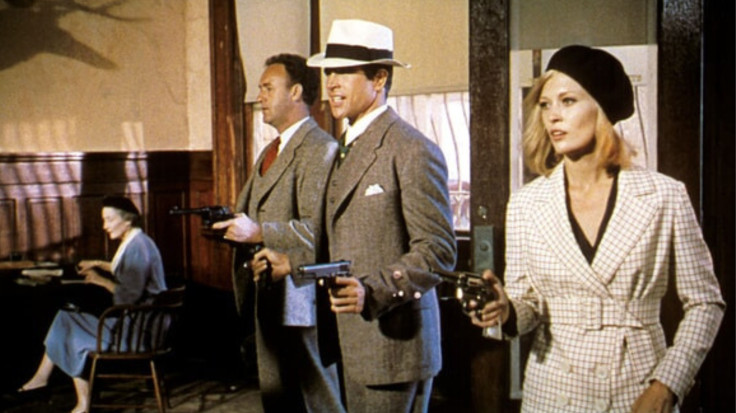
On 13 August 1967, the American crime film Bonnie and Clyde premiered in New York City, directed by Arthur Penn and starring Warren Beatty and Faye Dunaway. Distributed by Warner Bros.-Seven Arts, this film not only captivated audiences but also marked a seismic shift in Hollywood's approach to crime dramas and filmmaking as a whole.
The True Story That Inspired a Revolution in Film
Bonnie and Clyde dramatizes the lives of the notorious Depression-era outlaws Bonnie Parker and Clyde Barrow, whose bank robberies and audacious defiance captured public attention in the 1930s. The film traces their passionate but violent crime spree across the American South, culminating in a dramatic and deadly police ambush.
Warren Beatty's portrayal of the charming yet unpredictable Clyde Barrow is matched by Faye Dunaway's fiery and independent Bonnie Parker. The cast also includes memorable performances by Michael J. Pollard, Gene Hackman, and Estelle Parsons, who won the Academy Award for Best Supporting Actress for her role in the film. You can learn more about the cast and production on the Warner Bros Bonnie and Clyde page.
Heralding the New Hollywood Movement
Although the film initially received mixed reviews, it rapidly became a critical and commercial triumph and is heralded as one of the pioneering works of the New Hollywood era. This period saw filmmakers push creative boundaries with greater realism, freedom of expression, and bold storytelling techniques.
Bonnie and Clyde broke taboos through its candid depiction of violence and sexuality—subjects rarely explored so explicitly on screen at the time. Combined with its anti-establishment narrative and innovative style, it resonated powerfully with 1960s counterculture, reflecting societal tensions and changing moral attitudes. Its famous climactic shootout remains one of the most graphic and unforgettable scenes in cinematic history, as detailed in this insightful review.
Critical Acclaim and Lasting Legacy
The film earned ten Academy Award nominations, including Best Picture and Best Director, ultimately winning two Oscars: one for Estelle Parsons' supporting role and another for Burnett Guffey's cinematography. Despite being produced on a modest budget of around $2.5 million, Bonnie and Clyde grossed over $70 million worldwide, cementing its status as one of the biggest films of 1967. Its cultural and artistic significance was further recognised when the Library of Congress selected it for preservation in the National Film Registry in 1992. The film also consistently appears on the American Film Institute's lists of greatest American movies, ranking 27th in 1998 and 42nd in 2007.

Behind the Scenes: Crafting a Cinematic Milestone
The screenplay, penned by David Newman and Robert Benton with uncredited contributions from Warren Beatty and Robert Towne, perfectly captures the complex mix of brutality and romance at the heart of Bonnie and Clyde's story. Beatty not only starred but also produced the film, fighting Warner Bros. to ensure its release despite initial studio hesitation.
Director Arthur Penn's vision combined gritty realism with creative experimentation, blending humour, violence, and romance in a way that was ahead of its time. The use of slow-motion in the final ambush scene became iconic, frequently analysed and emulated by filmmakers. Explore the story behind the scenes on the TCM Bonnie and Clyde page.
Fascinating Trivia
- The film's famous photo shoot scene, where Bonnie is seen holding a gun and smoking a cigar, recreates an actual photograph discovered by police in the gang's hideout.
- Blanche Barrow and W.D. Jones, among the only surviving members of the real Barrow gang during the film's release, expressed dissatisfaction with how Blanche was portrayed.
- Warner Bros initially limited the film's release, but after Beatty threatened legal action, it gained wider distribution and massive success. More details on these facts can be found on the Bonnie and Clyde Wikipedia entry.
Why 13 August Remains a Landmark Date in Cinema
The US premiere of Bonnie and Clyde on 13 August 1967 marked the dawn of a new era in filmmaking. It was not merely a crime drama but a bold cinematic revolution that challenged traditional storytelling, morality, and style. Its influence paved the way for more daring films and directors, forever altering the trajectory of Hollywood cinema.
When reflecting on this milestone, Bonnie and Clyde stands as a testament to fearless storytelling, immortalising the complex and rebellious spirit of its infamous characters while pushing the boundaries of cinematic art.
If you have a passion for film history or wish to explore the evolution of American cinema, 13 August is a date worth remembering for this iconic release that reshaped the industry.







